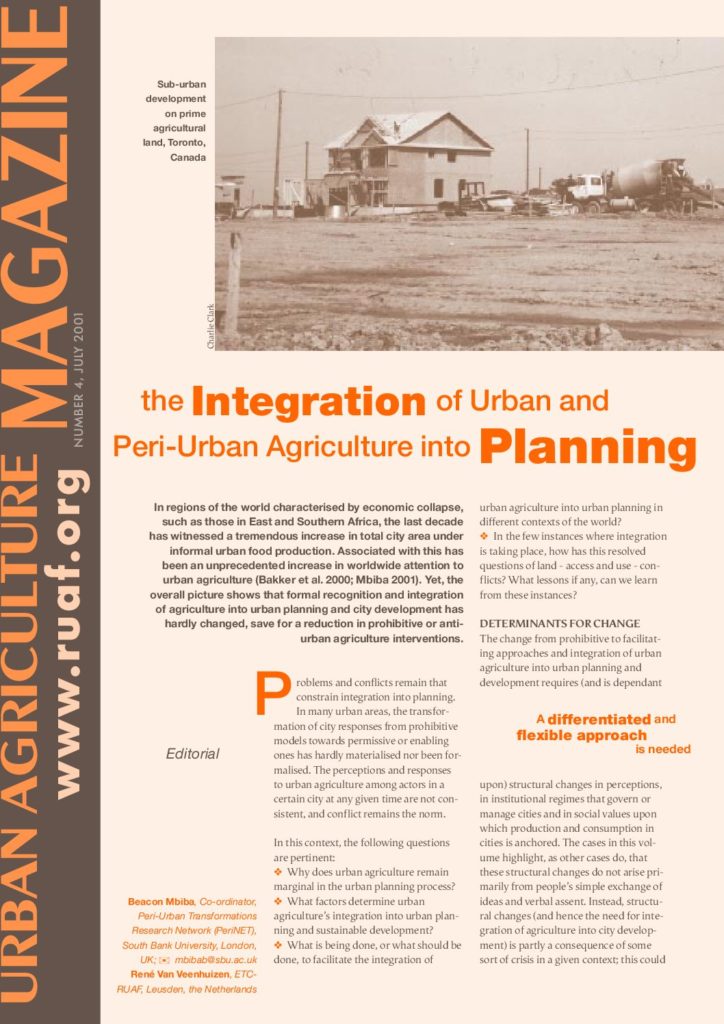In regions of the world characterised by economic collapse, such as those in East and Southern Africa, the last decade has witnessed a tremendous increase in total city area under informal urban food production. Associated with this has been an unprecedented increase in worldwide attention to urban agriculture. Yet, the overall picture shows that formal recognition and integration of urban agriculture into urban planning and city development has hardly changed, save for a reduction in prohibitive or anti-urban agriculture interventions.
This issue deals with the integration of urban agriculture into city planning.
Also available in Portuguese, Spanish and French.
Contents:
- Urban and Peri-urban Agriculture on the Policy Agenda, Report of the E-Conference
- Why We Need New Urban Planning Concepts; Insights from South Africa
- Awareness and Action in the UK
- Support for Urban Agriculture Needs Integration in St Petersburg
- Using Urban Agriculture for Sustainable City Planning in Bulgaria: the Case of Trojan
- The Urban Planning Dilemma in Harare, Zimbabwe
- The Marginalisation of Urban Agriculture in Lusaka
- Integration of Agriculture in City Development in Dar Es Salaam
- Incorporating Urban Agriculture In Gaborone City Planning
- Urban Agriculture Support Programme for Madhyapur Thimi Municipality in Nepal
- Urban Farming and Land-Use Planning in the Dominican Republic
- The El Panecillo Pilot Project in Quito, Ecuador
- Multifunctional Land Use: an Opportunity for Promoting Urban Agriculture in Europe
- Planning for Urban Agriculture in Suburban Development in Canada
- Supportive Policies from Two Distant Cities: Lisbon (Portugal) and Presidente Prudente (Brazil)
- Planning in a Changing Environment: the Case of Marilao in the Philippines

